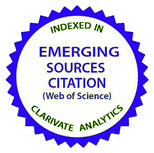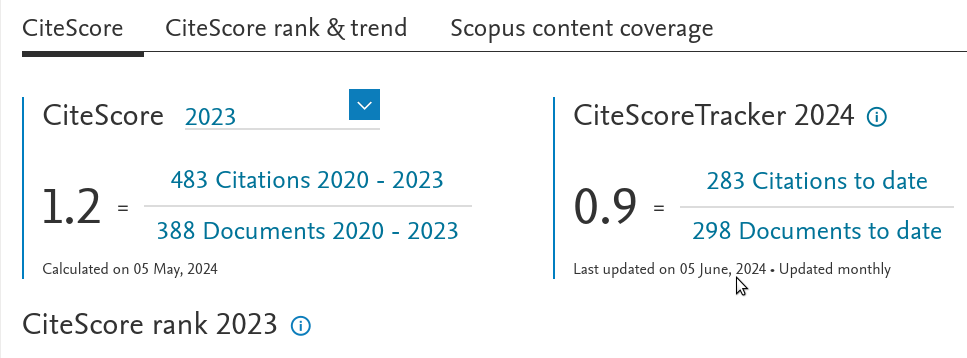Зміна забороненої зони ZnSxSe1–x об’ємних напівпровідників шляхом регулювання вмісту сірки
DOI:
https://doi.org/10.15407/ujpe63.01.0033Ключові слова:
Об’ємнi кристали ZnSxSe1−x, прямі переходи, непрямі переходи, заборонена зонаАнотація
Об’ємнi кристали ZnSxSe1−x були вирощенi за методом Бриджмена–Стокбаргера. Прозорiсть зразкiв ZnSxSe1−x становила вiд 67% до 56% на la = 1100 нм (товщина зразка 4 мм), що вказує на високу оптичну якiсть кристалiв. Оптичнi експерименти показали вiдсутнiсть нових станiв з включенням сiрки, заборонена зона безперервно рухається зi складом. Оптична ширина забороненої зони ZnSxSe1−x кристала варiювалася вiд 2,59 до 2,78 еВ для прямих переходiв i вiд 2,49 до 2,70 еВ для непрямих переходiв.
Посилання
<li>M. Emam-Ismail, M. El-Hagary, E. Ramadan et al. Influence of y-irradiation on optical parameters of electron beam evaporated ZnSe1?xTex nanocrystalline thin films. Radiat Eff. Defects Solids. 169 (1), 61 (2014).
<a href="https://doi.org/10.1080/10420150.2013.811505">https://doi.org/10.1080/10420150.2013.811505</a>
</li>
<li>P. Shotanus, P. Dorenbos, V. Ryzhikov. Detection of CdS (Te) and ZnSe (Te) scintillation light with silicon photodiodes. IEEE Trans. Nucl. Sci. 39 (4), 546 (1992).
<a href="https://doi.org/10.1109/23.159663">https://doi.org/10.1109/23.159663</a>
</li>
<li>T. Homann, U. Hotje, M. Binnewies et al. Compositiondependent band gap in ZnSxSe1?x a combined experimental and theoretical study. Solid State Sci. 8 (1), 44 (2006).
<a href="https://doi.org/10.1016/j.solidstatesciences.2005.08.015">https://doi.org/10.1016/j.solidstatesciences.2005.08.015</a>
</li>
<li>L.S. Lai, I.K. Sou, C.W. Law et al. ZnSSe-based ultraviolet photodiodes with extremely high detectivity. Opt. Mater. 23 (1), 21 (2003).
<a href="https://doi.org/10.1016/S0925-3467(03)00053-3">https://doi.org/10.1016/S0925-3467(03)00053-3</a>
</li>
<li>G. Kudlek, N. Presser, J. Gutowski et al. Comparative optical investigations of ZnSe/GaAs epilayers grown by molecular beam and hot-wall epitaxy. J. Appl. Phys. 68 (11), 5630 (1990).
<a href="https://doi.org/10.1063/1.346975">https://doi.org/10.1063/1.346975</a>
</li>
<li>C.T. Hsu. Growth of ZnSxSe1?x layers on Si substrates by atomic layer epitaxy. Mater. Chem. Phys. 58 (1), 6 (1999).
<a href="https://doi.org/10.1016/S0254-0584(98)00238-7">https://doi.org/10.1016/S0254-0584(98)00238-7</a>
</li>
<li>J.H. Song, E.D. Sim, K.S. Baek et al. Optical properties of ZnSxSe1?x (x < 0.18) random and ordered alloys grown by metalorganic atomic layer epitaxy. J. Cryst. Growth. 214, 460 (2000).
<a href="https://doi.org/10.1016/S0022-0248(00)00130-5">https://doi.org/10.1016/S0022-0248(00)00130-5</a>
</li>
<li>P. Prete, N. Lovergine, S. Petroni et al. Functional validation of novel Se and S alkyl precursors for the low temperature pyrolytic MOVPE growth of ZnSe, ZnS and ZnSSe. Mater. Chem. Phys. 66 (2) (2000).
<a href="https://doi.org/10.1016/S0254-0584(00)00317-5">https://doi.org/10.1016/S0254-0584(00)00317-5</a>
</li>
<li>M. Ambrico, G. Perna, D. Smaldone et al. Structural and optical parameters of films deposited on quartz substrates by laser ablation. Semicond. Sci. Technol. 13 (12), 1446 (1998).
<a href="https://doi.org/10.1088/0268-1242/13/12/021">https://doi.org/10.1088/0268-1242/13/12/021</a>
</li>
<li> L. Atroshchenko, L. Gal'chinetskii, S. Galkin et al. Structure defects and phase transition in tellurium-doped ZnSe crystals. J. Cryst. Growth. 198, 292 (1999).
<a href="https://doi.org/10.1016/S0022-0248(98)01235-4">https://doi.org/10.1016/S0022-0248(98)01235-4</a>
</li>
<li> L. Atroshchenko, L. Gal'chinetskii, S. Galkin et al. Influence of the growth parameters and subsequent annealing upon structural perfectness, optical and mechanical properties of ZnSe1?xTex crystals. Func. Mat. 8 (3), 455 (2001).
</li>
<li> R. Hussein, O. Pages, F. Firszt et al. Near-forward Raman study of a phonon-polariton reinforcement regime in the Zn(Se,S) alloy. J. Appl. Phys. 116 (8), 1 (2014).
<a href="https://doi.org/10.1063/1.4893322">https://doi.org/10.1063/1.4893322</a>
</li>
<li> R. Hussein, O. Pages, S. Doyen-Schuler et al. Percolationtype multi-phonon pattern of Zn(Se,S): Backward/forward Raman scattering and ab initio calculations. J. Alloys Compd. 644, 704 (2015).
<a href="https://doi.org/10.1016/j.jallcom.2015.04.078">https://doi.org/10.1016/j.jallcom.2015.04.078</a>
</li>
<li> R. Hussein, O. Pages, A. Polian et al. Pressure-induced phonon freezing in the ZnSeS II–VI mixed crystal: phonon–polaritons and ab initio calculations. J. Phys. Condens. Matter. 28 (20), 5401 (2016).
</li>
<li> S. Venkatachalam, D. Mangalaraj, S. Narayandass et al. The effect of nitrogen ion implantation on the structural, optical and electrical properties of ZnSe thin films. Semicond. Sci. Tech. 21 (12), 1661 (2006).
<a href="https://doi.org/10.1088/0268-1242/21/12/027">https://doi.org/10.1088/0268-1242/21/12/027</a>
</li>
<li> Y. Chen, J. Li, X. Yang et al. Band gap modulation of the IV, III–V, and II–VI semiconductors by controlling the solid size and dimension and the temperature of operation. J. Phys. Chem. C. 115 (47), 23338 (2011).
<a href="https://doi.org/10.1021/jp209933v">https://doi.org/10.1021/jp209933v</a>
</li>
<li> Y Alghamdi. Composition and band gap controlled AACVD of ZnSe and ZnSxSe1?x thin films using novel single source precursors Mat. Sci. Appl. 8 (10), 726 (2017).
</li>
<li> B. Pejova, B. Abay, L. Bineva et al. Temperature dependence of the band-gap energy and sub-band-gap absorption tails in strongly quantized ZnSe nanocrystals deposited as thin films. J. Phys. Chem. C. 114 (36), 15280 (2010).
<a href="https://doi.org/10.1021/jp102773z">https://doi.org/10.1021/jp102773z</a>
</li>
<li> D.B. Judd. Fresnel reflection of diffusely incident light. J. Res. Natl. Bur. Stand. 29 (5), 329 (1942).
<a href="https://doi.org/10.6028/jres.029.017">https://doi.org/10.6028/jres.029.017</a>
</li>
<li> R.H. Bube. Photoconductivity of Solids (Wiley, 1960).
</li>
<li> R. Summitt, J.A. Marley, N.F. Borrelli et al. The ultraviolet absorption edge of stannic oxide (SnO2). J. Phys. Chem. Solids. 25 (12), 1465 (1964).
<a href="https://doi.org/10.1016/0022-3697(64)90063-0">https://doi.org/10.1016/0022-3697(64)90063-0</a>
</li>
<li> J.E. Bernard, A. Zunger, Electronic structure of ZnS, ZnSe, ZnTe, and their pseudobinary alloys. Phys. Rev. B 36 (6), 3199 (1987).
<a href="https://doi.org/10.1103/PhysRevB.36.3199">https://doi.org/10.1103/PhysRevB.36.3199</a>
</li>
<li> A.A. El-Shazly, M.M. El-Naby, M.A. Kenawy et al. Optical properties of ternary ZnSxSe1?x polycrystalline thin films. Natl. Bur. Stand. 36 (1), 51 (1985).
</li>
<li> S. Larach, R.E. Shrader, C.F. Stocker. Anomalous variation of band gap with composition in zinc sulfo-and selenotellurides. Phys. Rev. 108 (3), 587 (1957).
<a href="https://doi.org/10.1103/PhysRev.108.587">https://doi.org/10.1103/PhysRev.108.587</a>
</li>
<li> A. Ebina, E. Fukunaga, T. Takahashi. Variation with composition of the E0 and E0+?0 gaps in ZnSxSe1?x alloys. Phys. Rev. B 10 (6), 2495 (1974).
<a href="https://doi.org/10.1103/PhysRevB.10.2495">https://doi.org/10.1103/PhysRevB.10.2495</a>
</li>
<li> L.G. Suslina, D.L. Fedorov, S.G. Konnikov et al. Dependence of forbidden-band width on composition of ZnSxSe1?x mixed-crystals. Sov. Phys. Semicond. 11 (10), 1132 (1997).
</li>
<li> A.V. Novoselova, V.B. Lazarev (Eds.). Physical and Chemical Properties of Semiconductors (Nauka, 1979) (in Russian).
</li>
<li> P. Herve, L.K. Vandamme. General relation between refractive index and energy gap in semiconductors. Infrared Phys. Technol. 35 (4), 609 (1994).
<a href="https://doi.org/10.1016/1350-4495(94)90026-4">https://doi.org/10.1016/1350-4495(94)90026-4</a></li></ol>
##submission.downloads##
Опубліковано
Як цитувати
Номер
Розділ
Ліцензія
Ліцензійний Договір
на використання Твору
м. Київ, Україна
Відповідальний автор та співавтори (надалі іменовані як Автор(и)) статті, яку він (вони) подають до Українського фізичного журналу, (надалі іменована як Твір) з одного боку та Інститут теоретичної фізики імені М.М. Боголюбова НАН України в особі директора (надалі – Видавець) з іншого боку уклали даний Договір про таке:
1. Предмет договору.
Автор(и) надає(ють) Видавцю безоплатно невиключні права на використання Твору (наукового, технічного або іншого характеру) на умовах, визначених цим Договором.
2. Способи використання Твору.
2.1. Автор(и) надає(ють) Видавцю право на використання Твору таким чином:
2.1.1. Використовувати Твір шляхом його видання в Українському фізичному журналі (далі – Видання) мовою оригіналу та в перекладі на англійську (погоджений Автором(ами) і Видавцем примірник Твору, прийнятого до друку, є невід’ємною частиною Ліцензійного договору).
2.1.2. Переробляти, адаптувати або іншим чином змінювати Твір за погодженням з Автором(ами).
2.1.3. Перекладати Твір у випадку, коли Твір викладений іншою мовою, ніж мова, якою передбачена публікація у Виданні.
2.2. Якщо Автор(и) виявить(лять) бажання використовувати Твір в інший спосіб, як то публікувати перекладену версію Твору (окрім випадку, зазначеного в п. 2.1.3 цього Договору); розміщувати повністю або частково в мережі Інтернет; публікувати Твір в інших, у тому числі іноземних, виданнях; включати Твір як складову частину інших збірників, антологій, енциклопедій тощо, то Автор(и) мають отримати на це письмовий дозвіл від Видавця.
3. Територія використання.
Автор(и) надає(ють) Видавцю право на використання Твору способами, зазначеними у п.п. 2.1.1–2.1.3 цього Договору, на території України, а також право на розповсюдження Твору як невід’ємної складової частини Видання на території України та інших країн шляхом передплати, продажу та безоплатної передачі третій стороні.
4. Строк, на який надаються права.
4.1. Договір є чинним з дати підписання та діє протягом усього часу функціонування Видання.
5. Застереження.
5.1. Автор(и) заявляє(ють), що:
– він/вона є автором (співавтором) Твору;
– авторські права на даний Твір не передані іншій стороні;
– даний Твір не був раніше опублікований і не буде опублікований у будь-якому іншому виданні до публікації його Видавцем (див. також п. 2.2);
– Автор(и) не порушив(ли) права інтелектуальної власності інших осіб. Якщо у Творі наведені матеріали інших осіб за виключенням випадків цитування в обсязі, виправданому науковим, інформаційним або критичним характером Твору, використання таких матеріалів здійснене Автором(ами) з дотриманням норм міжнародного законодавства і законодавства України.
6. Реквізити і підписи сторін.
Видавець: Інститут теоретичної фізики імені М.М. Боголюбова НАН України.
Адреса: м. Київ, вул. Метрологічна 14-б.
Автор: Електронний підпис від імені та за погодження всіх співавторів.













